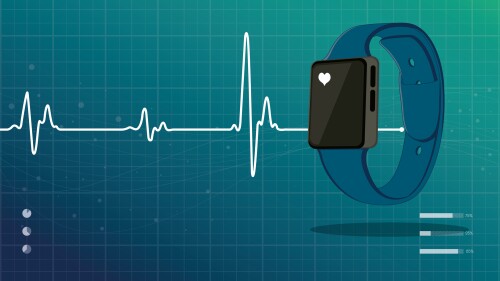BREAKING NEWS
Santa Monica’s new Advanced Provider Unit pairs a nurse practitioner with a firefighter/paramedic, freeing ambulances for critical emergencies and reducing unnecessary transports
Agencies statewide are struggling to recruit and retain paramedics and EMTs as competition for qualified candidates intensifies
Grand Haven leaders unanimously approved Life EMS as their ambulance provider after public safety officials cited concerns with staffing, response times and consistency
FDNY officials said a man was seriously injured after jumping from a fourth-floor Williamsburg apartment window to escape a kitchen fire
Uniformed Services University and NHTSA are launching a federally backed push to expand prehospital blood transfusions
EXCLUSIVES
SPECIAL REPORTS
UPCOMING & ON-DEMAND EVENTS
How technological advances influence PSAPs and ECCs and redefine the public safety ecosystem
Join this discussion with real-life spouses Mike Taigman and Sascha Liebowitz, on how to repair burnout by reconnecting with loved ones and mitigating the impact of the job on your relationships.
Taking a deeper look into the role of technology in public safety, our presenters offer insights into current technology use, and how it can save lives.
Join us for a discussion of the 2021 EMS Trend Report’s findings and strategies to combat the major issues facing EMS
You wouldn’t make cookies with just a fraction of the ingredients, why would you make decisions without all the data?
Learn how mental health support programs can alleviate stress in the workplace
Relationships and trust are the foundation of partnerships and contracts
Find out the latest on how your agency can access ARP and other funding opportunities, as well as guidance around proposals, tactics and strategies
Data collected throughout the first half of the year help agencies and departments improve performance and service
Best practices for infection control before, during and after assessment, treatment and transport of 3 common EMS patient scenarios
Explore ongoing research into fatigue and strategies to both prevent and manage it
A PCR can take 10 times longer than the call, but this webinar can help EMS agencies cut that time and provide complete call information
INDUSTRY INSIGHTS
Avon Protection showcases the effectiveness and durability of its latest scalable protective system, designed for eye, nose and mouth protection in real-world conditions
A webinar reviews key cases where the ‘most important vital sign’ helped shape care
Opioid-settlement dollars are already flowing to EMS – see how to use them to fund secure, compliant narcotics storage
It starts with sharpening decision-making skills
Protecting providers starts with a glove that won’t easily fail
WATCH NOW
Dr. Hezedean Smith shares a firsthand account of devastation, resilience and recovery, and how EMS leaders can support Jamaica’s responders
OFF DUTY
Rapid decision-making and risk assessment skills make EMS professionals a perfect fit for high-paying safety leadership roles
EMS Products
Follow this expert guide to cleaning, conditioning and polishing your boots, belts and gear the right way
The benefits are numerous, but the startup can be daunting; become a meal-prepping pro with these top-rated solutions
Read the first five practical, no-nonsense strategies to help you stay sharp, resilient, and in control — no matter what the job throws at you
When intentions don’t match actions, trust and morale suffer. Learn how to lead with purpose, awareness and genuine presence
The habit? Working out with your dog in ways that support movement, recovery and routine
The uniform doesn’t come with a manual for pet ownership — this might help
Save up to 40% off on Nest, Coleman, DEWALT, CRAFTSMAN, Contigo, Ninja, Cuisinart & more
Tired of aching feet? Check out these expert-backed solutions to keep you moving, stay pain-free and perform at your best
Short on time and space? Check out these products to help get a workout in no matter where you are in your day
PRODUCT RESEARCH CATEGORIES
The EMS1 Ambulance Safety product category is a collection of information, product listings and resources for researching Ambulance Safety solutions.
The EMS1 Fleet Management product category features information and resources for researching EMS Fleet Management and Ambulance Fleet Management products and programs.
The EMS1 Mobile Computers product category features products and information for researching EMS mobile computers and equipment, covering a variety of mobile computers used for managing data in the field and on the move.
The EMS1 Radios product category features products and information for researching EMS radios, covering communications equipment, communications interoperability, wireless handsets and EMS radio-related equipment.
The EMS1 Communications Interoperability product category features products and information for researching Communications Interoperability solutions, including interfaces, P25 radios and other mobile and stationary technologies.
The EMS1 EMS Body Armor product category features information, product listings and resources for researching body armor equipment and accessories for EMS.
Ambulances and specialty vehicles are crucial for delivering emergency medical services (EMS) in diverse environments, ranging from urban settings to remote areas. This topic covers vehicle types, configurations, design standards, and customization options for specific missions such as critical care transport, bariatric response, and tactical EMS. Understanding the capabilities and limitations of different vehicles enables agencies to select the most suitable platform for their specific needs. Vehicle safety, maintenance, and procurement are also explored. For details on enhancing vehicle functionality, see Ambulance Accessories. Explore the articles in this topic to learn more about selecting and managing EMS response vehicles.
The EMS1 Neonatal/Pediatric product category features products and information for researching EMS pediatric equipment, covering a variety of patient handling, CPR, training equipment and more.
The EMS1 Medical Equipment & Supplies category features products and information for researching EMS medical products, including a variety of ambulance supplies, patient handling, pediatric equipment and other EMS-related medical supplies.

















































